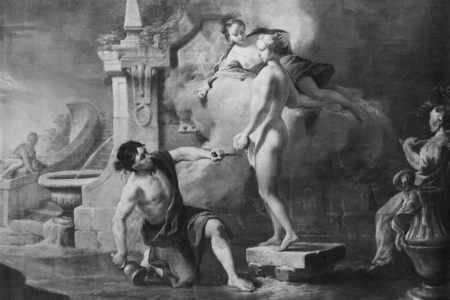We are in the midst of transitioning from an objectively true, historically consistent, analogue world and into a world that is subjectively purposed, revolutionary, and digital in construct. In fact, more so than ever before, we are in a period of time where the “what is” is being demonized and the wizard’s trick of “what it should be” is being lauded as a preferred pathway to the real.
A hyperreal world of dreams, visions, technology and digital realization is in many ways attempting to take the place of what mankind has always called “reality.”
In the late second century, the Christian Bishop, Irenaeus of Lyon, confronted the Gnostic parasitic cult of Valentinus which proposed that this physical world was a “prison” by which men and women needed to be liberated through Gnostic faith and practice. More specifically understood as “anticosmicism”, the Gnostics proclaimed the belief that the objectively knowable world is inherently evil and opposed to the divine. In the Gnostic formulation of their transformed Christianity, true divinity was not the essence of this real, natural world, but its negation and cancellation.[1]
Irenaeus of Lyon warned Christians that this parasitic religion of Gnosticism was a religion masquerading as the Gospel but in reality was a simulacrum of true Christianity:
“Error, indeed is never set forth in its naked deformity, lest, being thus exposed, it should at once be detected. But it is craftily decked out in an attractive dress, so as, by its outward form, to make it appear to the inexperienced more true than truth itself.” –Irenaeus of Lyons, AD 180
The Gnostics did not seek harmony with the natural world or with the normative Christian understanding of cultivation and dominion. Instead, the Gnostics attempted to parasitically transform the established Christian faith that sought harmony with God’s creation and instead promoted the false concept of the mystical, otherworldly insight that our world must be seen as unnatural and even anti-natural. The natural, in the Gnostic sense, was only available to those that have embraced special knowledge or what can be described as a critical consciousness of the natural world.
The way that things are in a natural sense to the Gnostics was “imprisonment” and the mystical otherness of what was not naturally attainable was “liberation.”
If you were a woman in the natural and objectively knowable world, in the spiritually anti-natural world the woman’s true self was actually that of a man who has been imprisoned by the Demiurgic forces of the natural world.
This denial of the objectively real and knowable experienced a renaissance in the 18th and 19th centuries through the works of Swedenborg, Kant, Hegel and eventually Karl Marx. As Dr. James Lindsay has explained at Sovereign Nation’s conferences in the past, Marxism is a Neo-Gnostic theology where Man is made to realize he is his own Creator, his own true Sun that revolves around itself. Marx sees himself as the light-bringer, Lucifer, the Morning Star, that awakens this Gnostic consciousness and rebels against God and order.
It has continued to this day with further gain of function through Horkheimer, Adorno, Marcuse and a host of other Neo-Marxists who have embraced unreality and rejected objective standards for truth, life, and human existence.
In this powerful presentation from the Sovereign Nation’s Mere Simulacrity Conference, Michael O’Fallon explains how the spectre of Gnosticism has been infused into our culture, our faith, and our world.
References
1. Jonas, Hans. 2001. The Gnostic Religion: The Message of the Alien God and the Beginnings of Christianity. Beacon Press. p. 271.
The audio version of this presentation is available on Soundcloud, Google Podcasts, Apple Podcasts, Spotify, and Stitcher.
Additional episodes of Mere Simulacrity may be viewed here.






Recent Comments